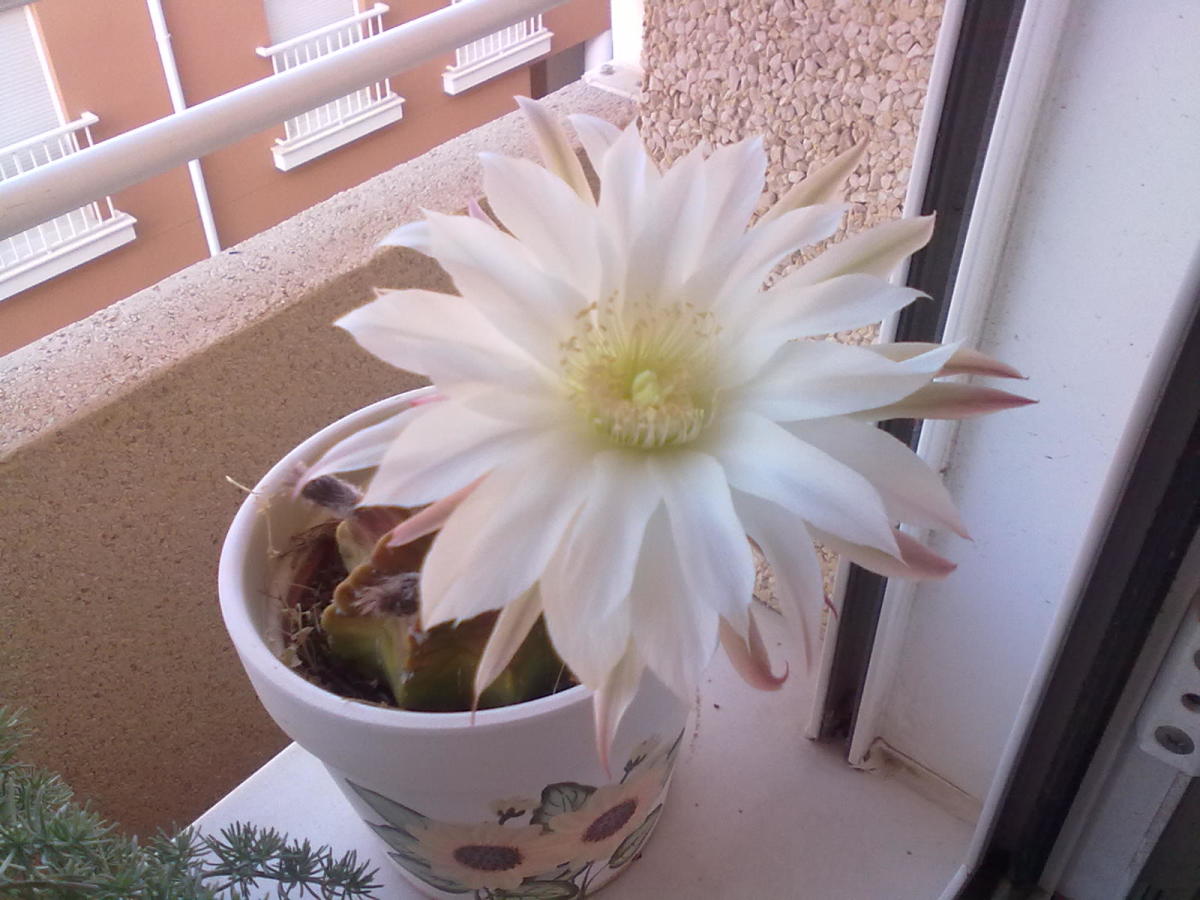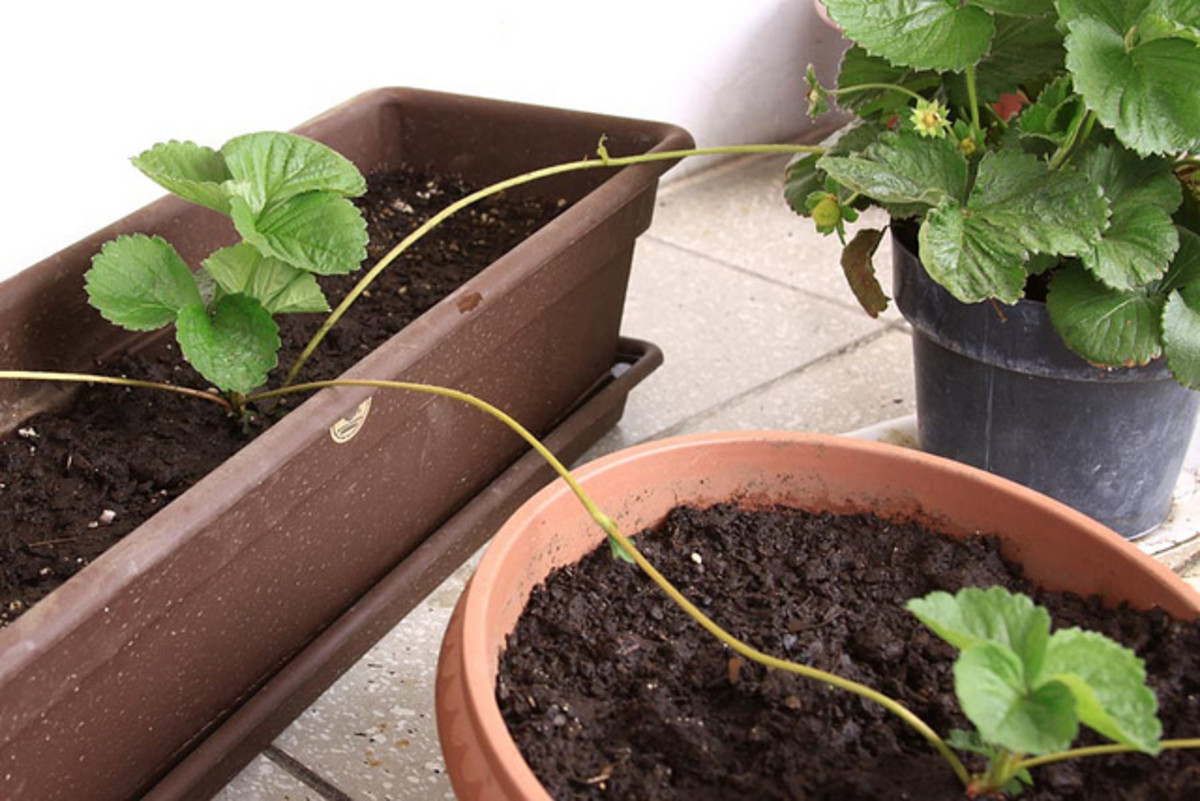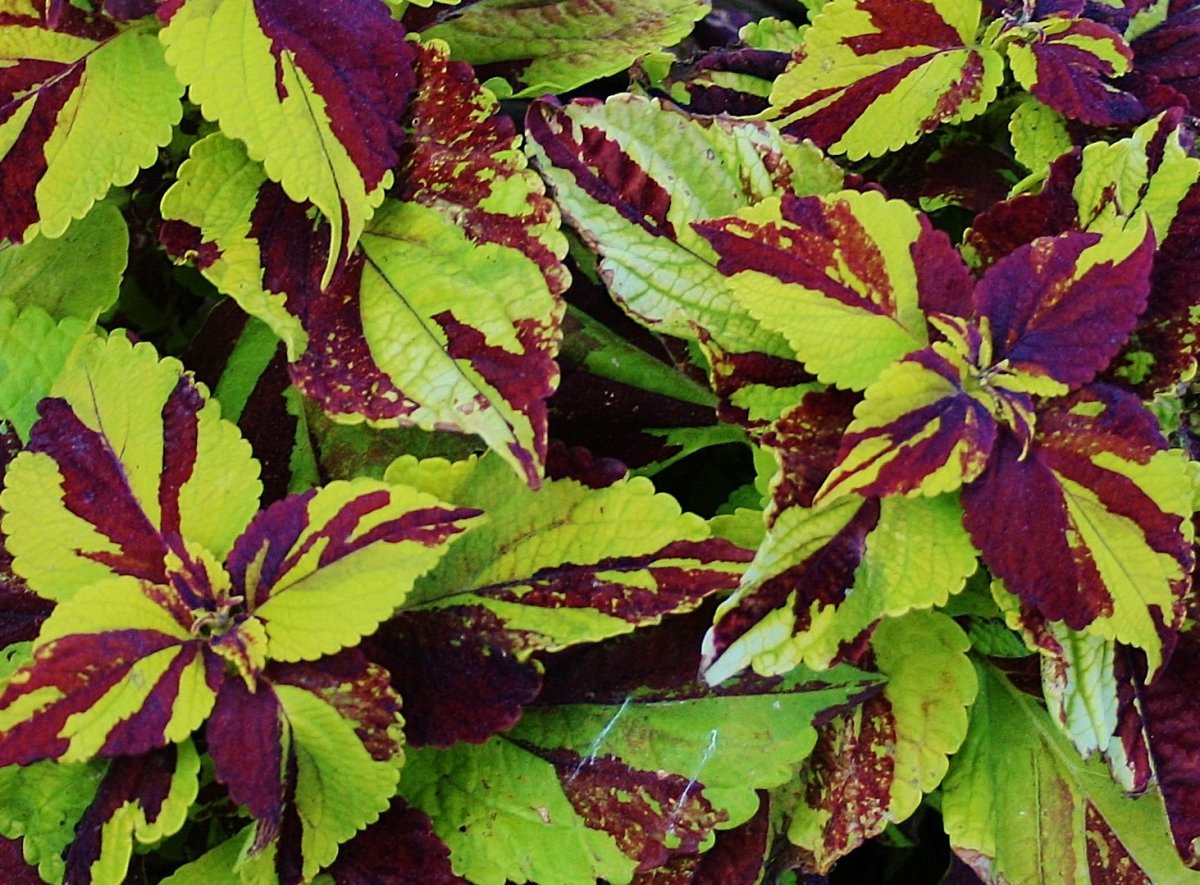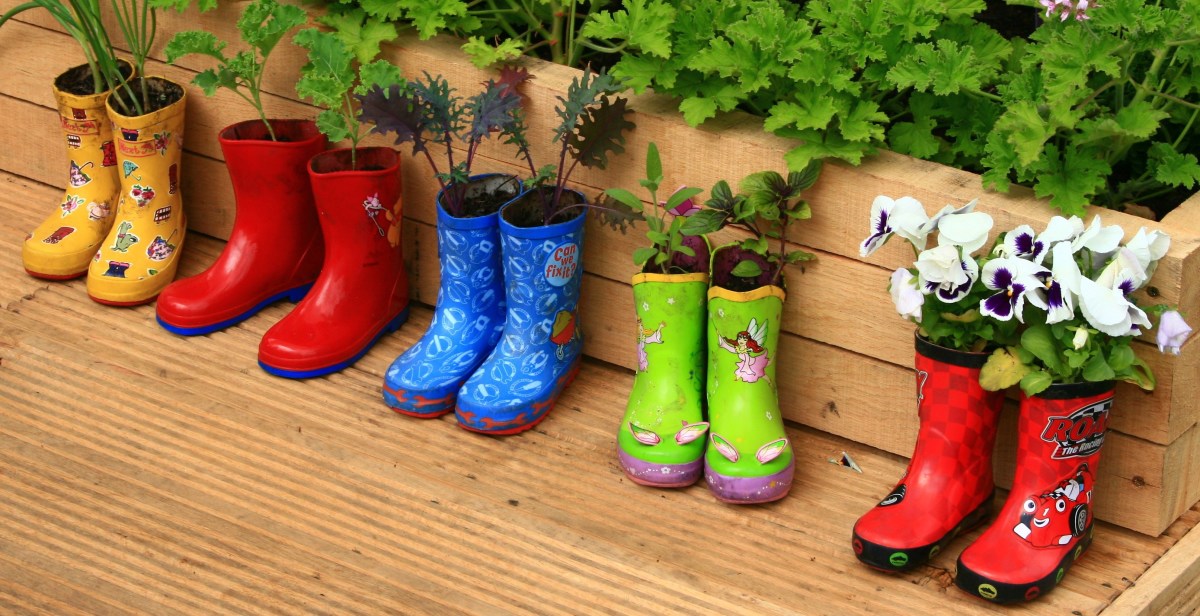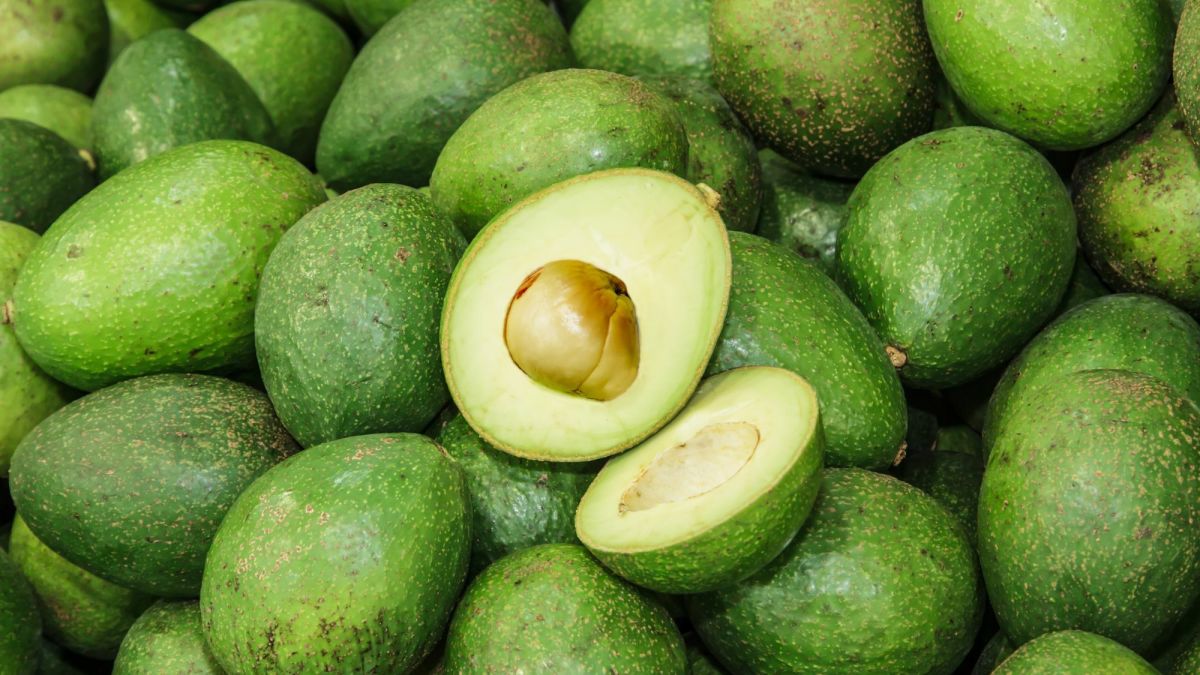A Guide on How to Grow Cactus
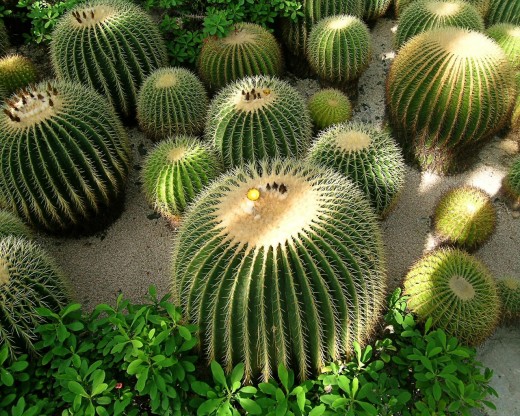
Cactus and succulents are mainly grown in containers. They are very suitable subjects for container culture since their growth is very slow. Even the quick growing species are made dwarf in containers, which makes them look even more beautiful than their normal stature. Cactus and succulents need less water and nourishment than other ornamentals grown in containers because of their xerophytic habits—they store food and water in their fleshy body or foliage.
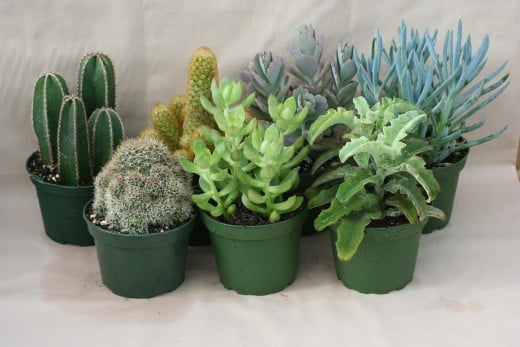
Types Of Cactus
The cactus species has hardly any foliage—they instead have spines. All cacti belong to a single family (Cactaceae). On the contrary, succulent plants are members of as many as nine families. They are Euphorbiaceae, Agavaceae, Azizoaceae, Asclepiadaceae, Crassulaceae, Compositae, Bromeliaceae, Liliaceae and Portulaceae.
As cactus is also a succulent, to distinguish between them, the term ‘cactus and other succulents’ is used.
Growing Cactus
Cacti have adapted to desert climate which is very dry and hot. Secondly, it is extremely sunny. In our gardens, however, they have adapted to the semi-shade conditions, and as such most species do not like sunny situations. Other characters remain the same, as developed in the desert. For example, cacti being less tolerant to rain need hot and dry weather. Therefore, protection from rain is imperative. For this reason a grower needs a polished or a fibre glass shed for rearing cacti. The fibre glass shed being costly the preference is shifted to having a polished because the polythene film is comparatively cheap. But the ordinary polythene is useless for this purpose because it does not last long. Hence, it may be suitable for the season crops like chrysanthemums and dahlias. Nowadays, U.V. stabilized polythene sheets are available which can resist the ultra violet rays of the sun and last for a long period.
Propagation
Cacti are propagated easily by cutting from stems and branches. Suckers and offsets can also be used as cuttings. Like fruit plants and some ornamentals such as the rose and hibiscus, cacti are multiplied by grafting. Seed propagation is also adopted in places where seed setting is abundant.
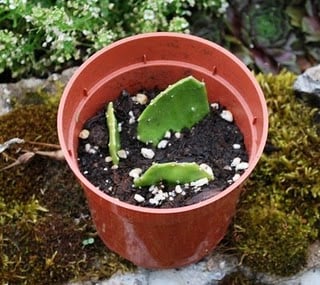
Cutting
One year old shoot cutting, from the cylindrical or segmented stems are suitable for rooting. In many genera, especially in Opuntia and Epiphyllum, the stems are joined, i.e. segmented with a number of constrictions. In such species cuttings through constrictions or distended portions hardly make any difference so far as rooting is concerned. But cutting through a fleshy portion needs treatment with sulphur dust at the cut end. The treated cuttings should be left for several days before putting into the sand medium. Pure sterilized sand is the best medium for rooting. To sterilize the medium a solution of permanganate of potash can be used. For cactus cuttings practically no rooting hormone is necessary. The cuttings strike best in hot weather. Watering should be such as to keep the medium just moist until the rooting takes place. On rooting they should be potted with potting compost.
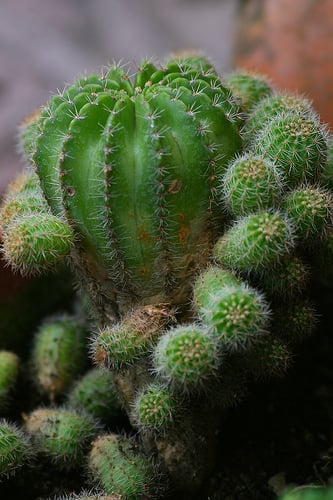
Offset
Most species develop offsets on their bodies, globular or cylindrical. Sprouting of offsets is sort of branching. The offsets root early. In many species they grow aerial roots and such offsets are as good as the rooted cuttings. They, on detaching are directly potted up with potting compost. Watering should be necessarily be infrequent. The offsets without the roots are treated as shoot cuttings.
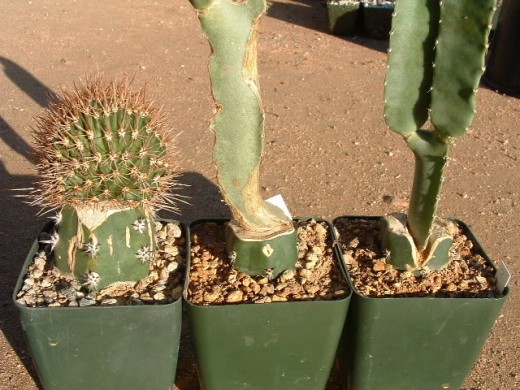
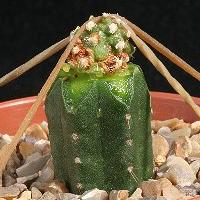
Grafting
The cacti like rose and fruit plants are propagated by grafting on to the suitable stocks of wild or hardy species. The delicate species which do not thrive on their own roots need to be grafted on the stocks having a strong root system. The best season for grafting is the hotter months.
In grafting, two plants are grafted or joined together. The plant that lends the roots is called ‘rootstock’ or simply ‘stock’ and the shoot intended to graft is called ‘scion’. While grafting care should be taken to see that both the stock and scion are in a growing condition. The stock and the scion should preferably be of the same girth at the point of grafting. First, at the desired height of the stock and at the selected point of the scion, make a smooth traverse cut on each, and then place the cut of the latter on the beheaded former. To exert pressure on the cut surface, press the grafted part and tie with a string or rubber band. The grafts should be placed in a shade for a week or so. The stock plant should get normal watering. Care should be taken to see that the graft joints do not get any moisture from outside. Normally the union takes place within 8-15 days. In that case the top of the scion become lively. Remove the string carefully from the graft joints.
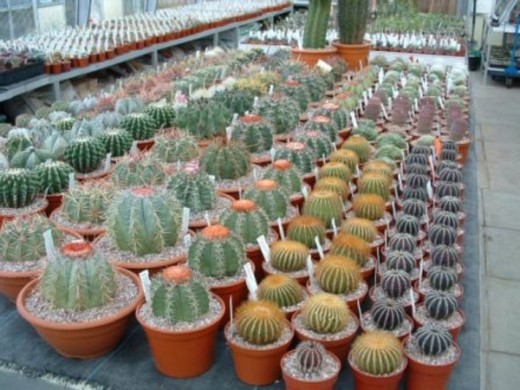
Procuring Plants: Where to buy cactus and succulent plants?
Small plants, grafts or rooted cuttings can be purchased from local nurseries. The grafts of rare varieties which are not locally found are procured from distant nurseries through parcels. The climate of the hill stations is not suitable for grafting. For this reason the nurseries of those place supply plants grown from cuttings; all of them may not thrive in the plains. For grafted plants one should go to the plains.
Potting Compost
Cacti prefer light soils. To make light sand should be mixed with a heavy soil proportionately to have a ratio of 60:40. The following ingredients with quantities against them are recommended for good potting compost.
Ingredient
| Quantity
|
|---|---|
Loam
| 1 bucket (10 litre capacity)
|
Leafmould
| 2-3 litres
|
Bonemeal / superphospate
| 300 g
|
Wood ash/sulphate of potash
| 300 g
|
Charcoal/brick bats
| 50 pieces
|
Chalk dust
| 30 g
|
Brick powder
| 200 g
|

Mix the ingredients thoroughly and pile the mix in moist condition for a week or so.
Planting and Repotting
Cacti do not need large pots in the beginning. The circumference of the pot mouth should be a bit larger than the girth of the plant to be planted. But this rule does not hold good in the case of cylindrical species. For small plants pots of 8 cm. diameter is good.
The potting operation is usual, as for other plants. Leave 1.5 cm empty at the top for holding water while watering. The cactus should not be watered after potting. After two or three days, water the plants as usual.
For quick growing plants repotting in bigger containers is necessary every year. But for slow growing plant it is done at an interval of 2-3 years. Take out the plant from the pot carefully. Reduce the soil ball to half and then pot as usual in a bigger pot, using fresh compost which is recommended for the first potting.
Weeding and Watering
If cacti are grown outdoors, weed will grow in the pot soil. As watering is not done frequently, weed growth is less than the usual container culture. Pull out the weeds, when small with a pair of pincers.
In the plains, cacti need to be watered once a week but in winter the interval being a fortnight. In the places of mild winter the cacti may need usual watering.
Supplementary Feeding
For cacti the nutritional requirements are also less. Feed supplements are usually applied once a year. The suitable period being the late winter or early spring. The following ingredients can be mixed to use as a feed supplement with advantage.
Ingredient
| Quantity
|
|---|---|
Leafmould
| 10 litres
|
Hoof and hornmeal
| 1 kg
|
Bonemeal
| 250 g
|
Wood ash
| 250 g
|
This amount of mixture is enough for 30-50 containers. Liquid manure with chemical fertilizer can also be used for the old cacti. It must be rich in potash fertilizer. The following mixture can be used for this purpose.
Ingredient
| Quantity
|
|---|---|
Water
| 5 litres
|
Sulphate of potash
| 30 g
|
Urea
| 20 g
|
Magnesium sulphate
| 15 g
|
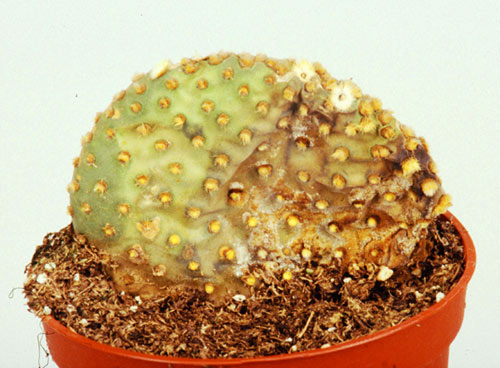
This liquid is sufficient for feeding 10-15 plants. Apply liquid manure half an hour after normal watering. It need not be applied more than twice a year.
Pests and Diseases
Amongst the pests, aphids, mealy bugs, spidersand scale insects are common. To ward off disease, preventative measured are very efficacious. Fungicides like Indofil M-45, Blue Copper and Bavistin, should be sprayed alternatively at a month’s interval.
Succulents
Most succulents may grow outdoors. Generally their leaves are fleshy which accumulate water, hence, need less watering. The propagation of succulents is very easy. The cuttings from stems or leaves are employed for growing new plants.
The species of succulents come from different families. On the contrary, cacti belong to a single family i.e. Cactaceae. The culture of succulents is almost the same as the herbaceous plants, but differs only in that they need less water and feeding.

